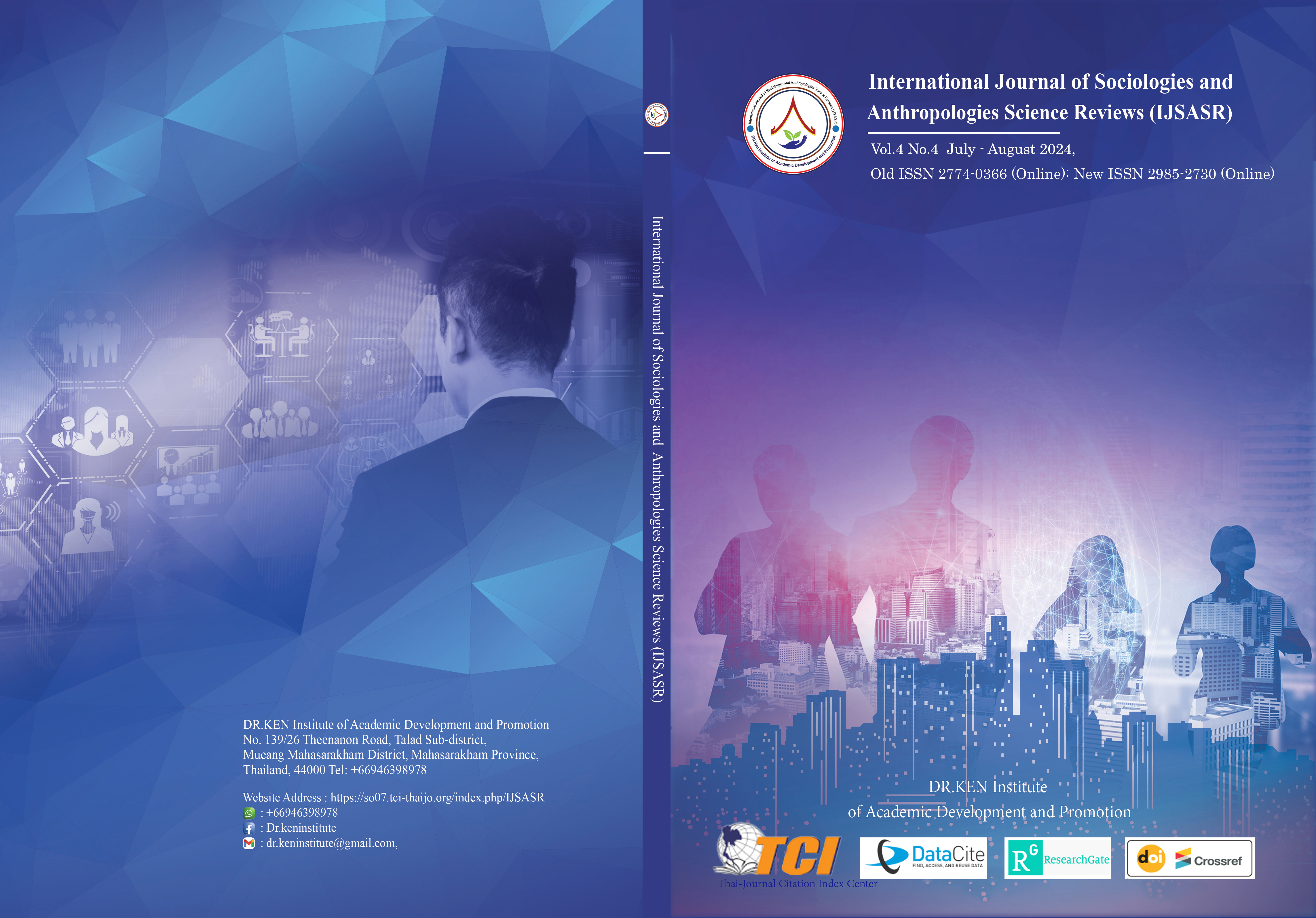Developing an Exercise Program to Improve Physical Fitness and Mental Health among University Students in Xi'an
Main Article Content
Abstract
Background and Aim: A university education is an important time to promote the healthy development of teenagers. It also plays a crucial role in cultivating exercise habits among undergraduate students. However, in the field of exercise, we have observed a downward trend in proactive engagement, where students do not have access to exercise programs. This study aimed to foster the healthy growth of undergraduates by improving their physical fitness and reducing anxiety through a well-designed exercise program. Therefore, the main objective of the research was the development of an exercise program to improve health-related physical fitness and reduce anxiety for students at Xi’an Physical Education University.
Materials and Methods: The research methods included a literature review on the physical fitness of 1000 students with low physical fitness and high anxiety at Xi'an Physical Education University. Researchers surveyed the anxiety levels of forty-five university students with high anxiety using a specified sampling method. The results of the physical fitness test and anxiety were obtained through a semi-structured questionnaire and the draft exercise program was developed based on experts' deep interviews. Subsequently, researchers implemented an experimental exercise program. Finally, the exercise program was confirmed through a survey.
Result: The research results were obtained after conducting in-depth interviews with experts. Subsequently, researchers carefully designed and evaluated an exercise program using the IOC's scoring criteria. This exercise program was then implemented in an eight-week experiment. After the students engaged in this exercise program for eight weeks, the results of all physical fitness test items reached the passing level. Additionally, thirty-one students no longer felt anxious, and the number of students experiencing mild anxiety dropped to fourteen.
Conclusion: There are many students whose physical fitness scores are unsatisfactory, unqualified, and who experience anxiety. After eight weeks of physical exercise, the anxiety scores of 31 students were within the normal range, and the anxiety scores of 14 students had been reduced to low levels of anxiety.
Article Details

This work is licensed under a Creative Commons Attribution-NonCommercial-NoDerivatives 4.0 International License.
Copyright on any article in the International Journal of Sociologies and Anthropologies Science Reviews is retained by the author(s) under the under the Creative Commons Attribution-NonCommercial-NoDerivatives 4.0 International License. Permission to use text, content, images, etc. of publication. Any user to read, download, copy, distribute, print, search, or link to the full texts of articles, crawl them for indexing, pass them as data to software, or use them for any other lawful purpose. But do not use it for commercial use or with the intent to benefit any business.

References
Brand, S., Colledge, F., & Ludyga, S., et al. (2018). Acute bouts of exercising improved mood, rumination, and social interaction in patients with mental disorders. Frontiers in Psychology, 9, 249-254.
Chen, C.H. (2012) Investigation and Research on the Current Situation of Leisure Sports and Fitness Activities in Parks in Nanning City. Guangxi University for Nationalities, Nanning.
Guo, Y., & Fan, Z. (2022). Exploration of the Current Situation and Development Model of Physical Fitness Testing for University Students under the Background of Big Data. New Sports, 6(24), 99-101.
Huang, L., Xue, Y., Cheng, L., & Wu, Q. (2022). Physical activity and mental health among university students: A systematic review of literature. Journal of Health Psychology, 27(4), 631-647. https://doi.org/10.1177/1359105321992448
Lin, X. (2019). Research on the Relationship between Physical Exercise and Mental Health of University Students. Education Modernization, 6(40), 86-88.
Perchtold‐Stefan, C.M., Fink, A., Rominger, C., Weiss, E.M., & Papousek, I. (2020). More habitual physical activity is linked to the use of specific, more adaptive cognitive reappraisal strategies in dealing with stressful events. Stress and Health: Journal of the International Society for the Investigation of Stress, 36(3), 274–286. https://doi.org/10.1002/smi.2929
Sampedro-Piquero, P., & Moreno-Fernández, R.D. (2021). Building resilience with aerobic exercise: role of FKBP5. Current Neuropharmacology, 19(8), 1156-1160. doi: 10.2174/1570159X19666210408124937
Shi, H., Wang, H., Wang, S., etc. (2018). Analysis and research on physical fitness tests of university students based on actual data. Journal of Mount Huangshan University, 20(3), 110-114.
Stubbs, B., Al K., Hallgren, M., et al. (2017). Physical activity and anxiety: a perspective from the world health survey. Affective Disorders, 208(15), 545-552.
Sun, L. (2022). The positive effect of university students' sports self-discipline on their physical and mental health. Neijiang Technology, 43(08), 21-23.
Wu, J., Zhao, J., Gao, M., et al. (2018). Analysis of Physical Fitness Testing and Motor Function Level of University Students: Taking Zhengzhou University as an Example. Contemporary Sports Technology, 8(17), 146+149.
Ye, J. (2021). The intervention effect of different physical exercise modes on mental health and self-efficacy. Journal of Hubei Second Normal University, 7, 85-89.
Yoshikawa, E., Nishi, D., & Matsuoka, Y.J. (2016). Association between regular physical exercise and depressive symptoms mediated through social support and resilience in Japanese company workers: a cross-sectional study. BMC Public Health, 16(1), 1-8.
Zhong, P. (2018). Research on the Promoting Effect of University Physical Education Curriculum Reform on Students' Psychological Health. Wuhan Institute of Physical Education.






